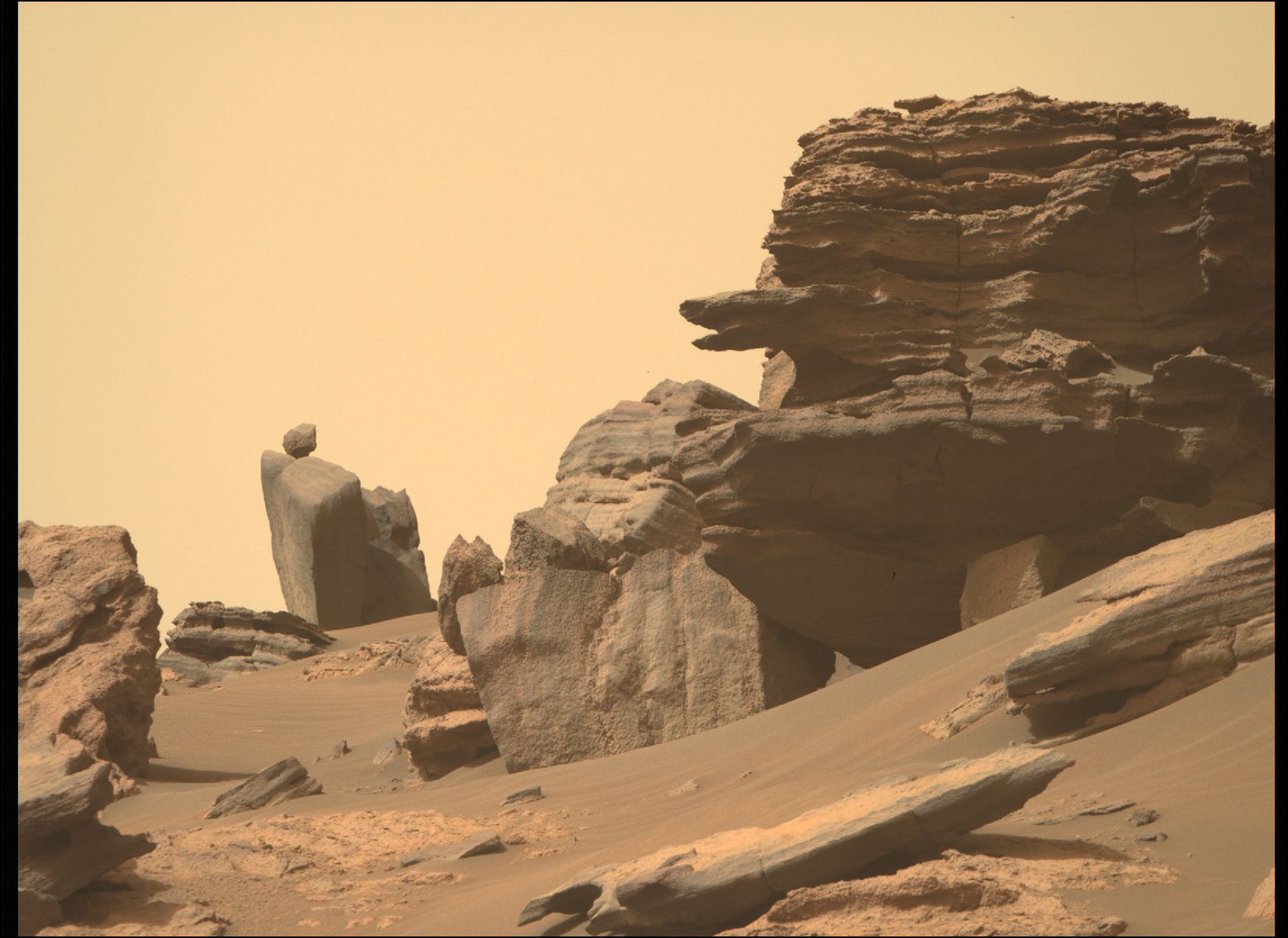The Perseverance rover has begun exploring a region that looks a little like Monument Valley in Arizona and Utah in the US, or perhaps like a set on an old sci-fi movie. The rover’s science team has nicknamed the area “Hogwallow Flats,” and the rock formations in this area on Mars are stunning in their varied and sometimes absurd shapes and structures. One wonders what took place here eons ago to create the weird variety of formations.
While small, one feature catches the eye: a smaller rock that appears to be perfectly perched and balanced on top of a larger rock formation.

Image Credit: NASA/JPL-Caltech/ASU
Knowing the history of that rock would certainly provide an interesting story, geologically speaking. What process or processes could bring a rock to be in such an unlikely position? Given the ruggedness of the area, its doubtful Perseverance could drive in for a closer look.
It’s very unlikely the rock was ‘dropped’ into its current location. More probable is that the rock was part of the original bedrock formation and over millennia, wind erosion wore it down to its present shape. Wind is a powerful agent of erosion, and we know Mars is a windy planet. On the Red Planet, we can witness its power over time, and even today. Called aeolian processes, wind erosion is a powerful agent, especially in desert areas on Earth that area very similar to Mars.
“On Mars, where other processes such as fluvial [water] erosion, volcanism, and tectonism are slow, intermittent, or do not occur in the present era, aeolian activity is the most dynamic geologic process,” writes the team for the High Resolution Science Experiment camera (HiRISE) on the Mars Reconnaissance Orbiter, which has an entire section of images related to how wind has shaped the planet.
Given the high winds and the propensity for dust storms to occur on Mars, in all likelihood this “balancing rock” has been carved by wind and pelted by dust like a sandblaster, creating this feature from the underlying bedrock over millennia. Just like in Monument Valley on Earth, the simple wearing down of altering layers of soft and hard rock slowly revealed the natural wonders we see today.
However, Perseverance also found evidence of a little bit of “alien” intervention on the landscape. Take a look:
The rover team says that shiny bit of foil is part of a thermal blanket – a material used to control temperatures. “It’s a surprise finding this here: My descent stage crashed about 2 km away. Did this piece land here after that, or was it blown here by the wind?” the team asked on Twitter. Here’s a closeup, showing the foil:

But this region is a treasure trove of unusual features, and it will be interesting to see how much Perseverance can study these features. Here’s another unusual “periscope-like” feature on top of another rock formation:


Image Credit: NASA/JPL-Caltech
Since this place looks so much like the Navajo Monument Valley, its fitting that the Perseverance team is using Navajo/Diné terms for naming the features the rover sees on Mars. Our friend Jason Major has a suggestion:

